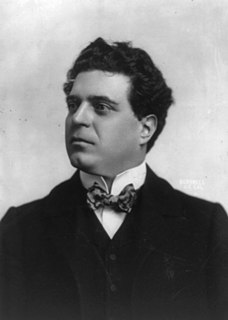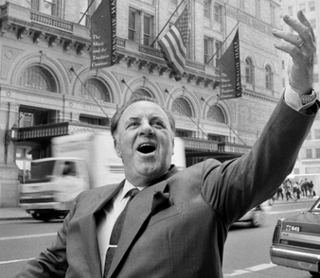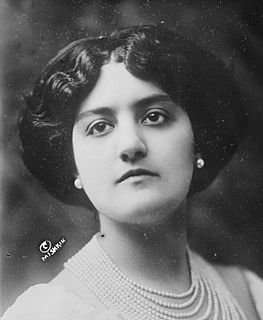
Pietro Mascagni was an Italian composer primarily known for his operas. His 1890 masterpiece Cavalleria rusticana caused one of the greatest sensations in opera history and single-handedly ushered in the Verismo movement in Italian dramatic music. While it was often held that Mascagni, like Ruggero Leoncavallo, was a "one-opera man" who could never repeat his first success, L'amico Fritz and Iris have remained in the repertoire in Europe since their premieres.

Carlo Bergonzi was an Italian operatic tenor. Although he performed and recorded some bel canto and verismo roles, he was above all associated with the operas of Giuseppe Verdi, including many of the composer's lesser known works he helped revive. He sang more than forty other roles throughout his career.

Teatro Regio di Parma, originally constructed as the Nuovo Teatro Ducale, is an opera house and opera company in Parma, Italy.

Gianluigi Gelmetti OMRI, was an Italian-Monégasque conductor and composer.

Roberto Abbado is an Italian opera and symphonic music conductor. Currently he is Artistic Partner of The Saint Paul Chamber Orchestra. In 2015 he has been appointed Music Director of Palau de les Arts Reina Sofia in Valencia, Spain. From 2018 he's Music Director of the Festival Verdi in Parma. Previously he held the position of Chief Conductor of Münchner Rundfunkorchester.

Carmen Melis was an Italian operatic soprano who had a major international career during the first four decades of the 20th century. She was known, above all, as a verismo soprano, and was one of the most interesting singing actresses of the early 20th century. She made her debut in Novara in 1905 and her career rapidly developed in her native country over the next four years. From 1909 to 1916 she performed with important opera companies in the United States; after which she was busy performing at many of Europe's most important opera houses. From 1917 until her retirement from the stage in 1935 she was particularly active at the Teatro Costanzi in Rome and at La Scala in Milan. After her singing career ended, she embarked on a second career as a voice teacher. Her most notable student was soprano Renata Tebaldi.
The San Carlo Opera Company was the name of two different opera companies active in the United States during the first half of the twentieth century.
Giuseppe Giacomini was an Italian tenor.

Alessandro Siciliani is an Italian conductor of opera and symphonic music. He is also a composer of symphonic music. Siciliani was born in Florence, Italy, the son of Ambra and Francesco Siciliani, the celebrated opera impresario. Siciliani currently resides in Columbus, Ohio, where he was the music director of the Columbus Symphony Orchestra from 1992 to 2004.

Carlo Colombara is an Italian operatic bass. He has sung leading roles in many major opera houses including Teatro alla Scala ; the Vienna State Opera ; the Real Teatro di San Carlo ; the Arena di Verona ; the Royal Opera House, and the Metropolitan Opera.
Raffaele Mirate was a celebrated Italian operatic tenor who had an active career from the 1830s through the 1860s. Known for his intelligent phrasing and bright and powerful vocal timbre, he was regarded as an outstanding interpreter of the tenor roles in the early and middle period operas of Giuseppe Verdi. He notably created the role of the Duke of Mantua in the world premiere of Verdi's Rigoletto in 1851. He was also a highly regarded interpreter of bel canto roles, excelling in the operas of Vincenzo Bellini, Gaetano Donizetti, and Gioachino Rossini.
Giovanni Tadolini was an Italian composer, conductor and singing instructor, who enjoyed a career that alternated between Bologna and Paris. Tadolini is probably best known for completing six sections of Rossini's 1833 version of the Stabat mater after the latter fell sick. However, he also composed eight operas as well as sinfonias, sonatas, chamber music, and numerous pieces of religious music and art songs.
Agide Jacchia was an Italian orchestral director.
Henry Russell was an English impresario, conductor, director, and singing teacher.
Gaetano Bavagnoli (1879–1933) was an Italian conductor who was particularly known for his work within the field of opera. He was mainly active within Italy's major opera houses during the first third of the 20th century; although he did conduct at important international stages like the Metropolitan Opera in New York City and the Royal Opera House in London as well. He also worked as a voice teacher and was notably the instructor of opera singers Emanuel Kopecky, Lina Pagliughi, and Aureliano Pertile.
Alfredo Costa was an Italian operatic baritone who had an active international career from 1900 until his death in 1913 at the age of 39. He appeared in French and Italian language operas of the 19th century and early 20th century, performing throughout the Italian provinces, and in Brazil, Chile, France, Portugal, Ukraine, and the United States. His voice is preserved on recordings made for Pathé Records in 1908, and for Odeon Records and the Gath & Chaves department store in Buenos Aires.

Achille Peri was an Italian composer and conductor. He is best known for his operas which were strongly influenced by the music of Giuseppe Verdi.
Raffaele Scalese (1800–1884) was an Italian operatic bass who specialized in the opera buffa repertoire. He was active in Italy's major opera houses from the mid-1820s up into the 1860s. He also appeared internationally in opera houses in Austria, Portugal, and France. The last years of his career were spent performing in Paris in the late 1860s where he remained after his retirement from the stage.

Alice Zeppilli was a French operatic soprano of Italian heritage who had an active international singing career from 1901 to 1930. The pinnacle of her career was in the United States where she enjoyed great popularity between 1906 and 1914; particularly in the cities of Chicago, New York, and Philadelphia. She was popular in Monte Carlo where she performed frequently from 1904–19 and later worked as a singing teacher after her retirement from the stage. She made only one recording, a phonograph cylinder for Columbia Records consisting of the Gavotte from Jules Massenet's Manon and Olympia's Doll Aria from Jacques Offenbach's The Tales of Hoffmann.
Olga Simzis was an operatic soprano who was active in the United States, Italy and Latin America from 1906 to 1941. She created the role of Ermyntrude in Pietro Mascagni's opera Isabeau in its world premiere conducted by the composer at the Teatro Coliseo in Buenos Aires in 1911. She also sang the role of Gilda in some scenes of one of the first complete recordings of Giuseppe Verdi's Rigoletto, where she substituted the first-cast soprano Ayres Borghi-Zerni.










